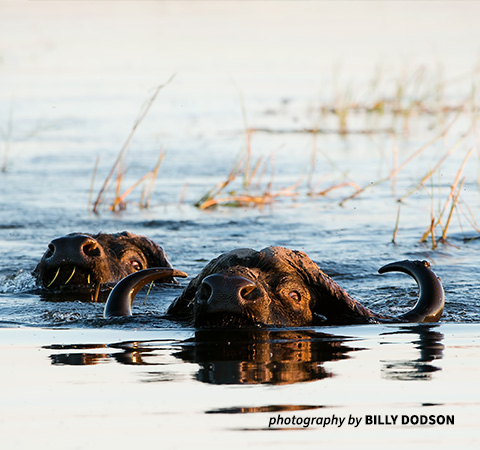Why we need new systems to recognize biodiversity and ecosystem services

Wellington Matsika joined AWF at COP15 as a Charles R. Wall Young Policy Fellow.
The importance of biodiversity to development and human wellbeing can never be overemphasized. Recognizing the unprecedented loss of biodiversity over the last decades and the need to halt and reverse such loss, countries all over the world negotiated and agreed on the Kunming-Montreal Global Biodiversity Framework in December 2022, which guides how we should conserve and sustainably utilize biodiversity. As we celebrate the 2023 International Biodiversity Day under the theme “From Agreement to Action, Building Back Biodiversity,” it is imperative that we reflect on the systems that we use for decision-making and ensure that they recognize and integrate the value of biodiversity.
Economic decision-making frameworks tend to leave out the impacts and dependencies of economic activities on biodiversity and ecosystem services. This prevents their contributions from being accounted for appropriately. At the same time, decision-makers lack adequate data on the economic risks of biodiversity loss and ecosystem degradation.
Consequently, the investments required to maintain contributions of biodiversity and ecosystem services are lacking. On the other hand, those who benefit from degradation avoid paying the cost. Degradation and underinvestment in the protection and conservation of biodiversity and ecosystem services thereby continue.
Measuring economic success through GDP is misleading. Global crises such as climate breakdown, biodiversity loss, and ecosystem degradation have shown us that a narrow focus on GDP growth will not deliver the desired quality of life to current and future generations. GDP lacks focus on non-market benefits of biodiversity and ecosystem services such as climate regulation, flood attenuation, disease control, crop pollination, and soil nutrient cycling, among others. By considering only human and manufactured capital, GDP has steered economic policy and investment in ways that are harmful to biodiversity and ecosystem services.
How can we measure natural capital contributions to sustainable development?

Zimbabwe is home to a rich variety of wildlife.
Indeed, many years ago, the value of natural capital was difficult to measure, and hence it was ignored in decision-making frameworks. However, new tools can now measure the worth of nature and its contributions to humanity. Metrics such as the Inclusive Wealth Index can measure the total social value of economic, human, produced, and natural capital to sustainable development. This index has generally shown that we are not as prosperous as we think because we are consuming and depleting natural capital at unsustainable rates. The index shows that natural capital is just as important for our prosperity as developing health, education, and industrial infrastructure.
A new metric called the Gross Ecosystem Product has also been developed to measure the final value of ecosystem goods and services supplied to human wellbeing annually in a given region. This metric captures the contribution of nature to economic and human wellbeing. In addition, a new methodology called True Cost Accounting has been developed for public and private sectors to compute the real cost of providing a good or service by accounting for the effects on natural and social environment over and above costs of raw materials and labour.
Through natural capital accounting, 62 countries globally (with four countries in Africa) now regularly compile and disseminate national capital accounts to track the consumption and contribution of nature in economic activities and to inform nature-smart policies. The Taskforce on Nature-Related Financial Disclosures is providing metrics for businesses to calculate and manage their ecological footprint.
How can we reconfigure decision-making frameworks?
Shifting the economic discourse away from maximizing GDP growth and towards maximizing inclusive wealth growth which accommodates all forms of capital – human, produced, social, and natural. This way, the value of biodiversity and ecosystem services is recognized, and economic development will not be heedlessly pursued at the expense of depleting natural capital.
Additionally, it is imperative to adopt frameworks such as Gross Ecosystem Product, True Cost Accounting, and Natural Capital Accounting, among others. These tools identify, measure, analyze, and track the contributions of nature to the economic and social wellbeing of humanity and inform nature-smart policies.
Strengthening existing institutional mechanisms, or establishing new systems, to support the adoption of emerging frameworks and metrics will allow for the integration of biodiversity and ecosystem contributions in development, business, and financial planning.
>>Find out how managing natural resources reduces human-wildlife conflict in Zimbabwe